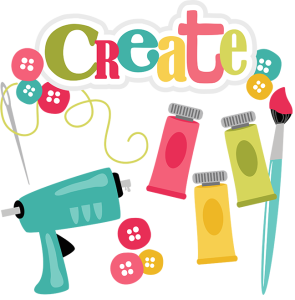 Art and Craft Classes in South Delhi, Chhatarpur. We offer very unique and interactive Art and Craft classes for school students and individuals. Art and craft classes can vary widely depending on the type of class and the instructor, but here is our curriculum.
Art and Craft Classes in South Delhi, Chhatarpur. We offer very unique and interactive Art and Craft classes for school students and individuals. Art and craft classes can vary widely depending on the type of class and the instructor, but here is our curriculum.
Class Structure
- Curriculum and Syllabus:
- Beginner to Advanced Levels: Courses often cater to different skill levels, from beginners to advanced artists.
- Thematic Workshops: Some classes focus on specific themes or techniques, such as abstract painting, sculpture, or textile arts.
- Duration and Frequency:
- Short-Term Workshops: Typically range from a few hours to a few days.
- Long-Term Courses: May span several weeks to months, with regular sessions.
- Class Size:
- Small Groups: Allows for personalized instruction and more interaction.
- Large Groups: May be more cost-effective but might limit individual attention.
Content and Activities
- Techniques and Mediums:
- Painting: Watercolors, acrylics, oils, mixed media.
- Drawing: Pencil, charcoal, ink.
- Crafts: Pottery, knitting, paper crafts, woodworking.
- Digital Art: Some classes might include digital techniques and software.
- Hands-On Projects:
- Practical Work: Emphasis on creating your own artwork or craft items.
- Portfolio Development: For more serious students, building a collection of work.
- Instruction and Feedback:
- Demonstrations: Instructors often provide demonstrations of techniques.
- Personalized Feedback: Regular critique and guidance on improving skills.
Materials and Resources
- Provided Materials:
- Inclusion: Many classes provide basic materials (paints, brushes, paper).
- Additional Costs: Some may require students to bring their own materials or purchase additional supplies.
- Studio Space:
- Well-Equipped Studios: Access to professional-grade tools and space.

- At-Home Options: Some classes might be designed for students to work from home.
- Well-Equipped Studios: Access to professional-grade tools and space.
Instructor Qualifications
- Experience:
- Professional Artists: Many instructors are practicing artists with professional experience.
- Specialized Skills: Some instructors might have expertise in specific techniques or styles.
- Teaching Style:
- Traditional: Focus on classical techniques and foundational skills.
- Experimental: Encourages exploration and unconventional methods.
Additional Features
- Exhibitions and Shows:
- Student Exhibitions: Opportunities to showcase work in local galleries or exhibitions.
- Community Events: Participation in craft fairs or art shows.
- Certificates and Recognition:
- Completion Certificates: Some classes offer certificates upon completion.
- Accreditation: In more formal settings, classes may be part of accredited programs.
- Online Options:
- Virtual Classes: For those who prefer or need to learn from home, many institutions offer online classes with digital instruction.
- Social and Networking Opportunities:
- Art Communities: Classes often provide a space to connect with other artists and craft enthusiasts.
Why Motion Coaching for Art and Craft Classes
When evaluating the best art and craft institutes, consider the following key features that can significantly enhance your learning experience:
1. Quality of Instruction
- Experienced Instructors: Look for institutes with faculty who are not only skilled artists but also experienced educators. Their ability to provide constructive feedback and guidance is crucial.
- Specialized Expertise: Institutes that offer instructors with specialized knowledge in various art forms (e.g., painting, sculpture, digital art) can provide more focused and advanced learning opportunities.
2. Comprehensive Curriculum
- Diverse Course Offerings: A wide range of classes and workshops in different art forms and techniques allows students to explore and specialize in their areas of interest.
- Structured Learning Paths: Well-organized programs with clear progression from beginner to advanced levels help students build skills systematically.
3. Facilities and Resources
- State-of-the-Art Studios: Access to well-equipped studios with high-quality materials and tools can greatly enhance the learning experience.
- Technology Integration: For digital art, look for institutes that offer modern software and equipment, such as graphics tablets and high-performance computers.
4. Personalized Attention
- Small Class Sizes: Smaller class sizes allow for more individualized instruction and feedback, fostering a better learning environment.
- One-on-One Mentorship: Opportunities for personal guidance and mentorship can help address specific needs and goals.
5. Practical Experience
- Hands-On Projects: Emphasis on creating actual artworks or craft items helps students apply what they’ve learned.
- Exhibitions and Shows: Institutes that provide platforms for students to showcase their work offer valuable real-world experience and exposure.
6. Supportive Community
- Artistic Community: A vibrant community of fellow students and alumni can provide support, inspiration, and networking opportunities.
- Collaborative Opportunities: Institutes that encourage collaboration and group projects can enhance the learning experience and foster creativity.
7. Flexibility and Accessibility
- Varied Scheduling: Offering classes at different times and days, including weekends and evenings, can accommodate diverse schedules.
- Online Classes: For those who cannot attend in person, online courses or hybrid models can provide access to high-quality instruction from anywhere.
8. Accreditation and Recognition
- Accreditation: Institutes that are accredited or recognized by reputable art and craft organizations may offer more credibility and professional value.
- Certifications: Some institutes provide certificates or diplomas that can enhance career prospects and validate your skills.
9. Affordability and Financial Support

- Reasonable Fees: Look for institutes that offer quality education at affordable rates.
- Scholarships and Financial Aid: Availability of scholarships, grants, or financial aid can make education more accessible.
10. Post-Graduation Support
- Career Services: Assistance with job placements, internships, and portfolio development can be beneficial for career advancement.
- Alumni Network: Strong networks of alumni can provide ongoing support, opportunities, and connections in the art world.
Examples of Renowned Institutes
- School of the Art Institute of Chicago (SAIC): Known for its extensive range of programs and strong faculty.
- Rhode Island School of Design (RISD): Offers comprehensive art and design programs with excellent facilities.
- Royal College of Art (RCA), London: Renowned for its postgraduate programs and high-caliber faculty.
- Parsons School of Design, New York: Offers a diverse curriculum with strong industry connections.
In Delhi, We are, Motion Art and Craft Classes , well-regarded for our programs. Book your consultation free.






